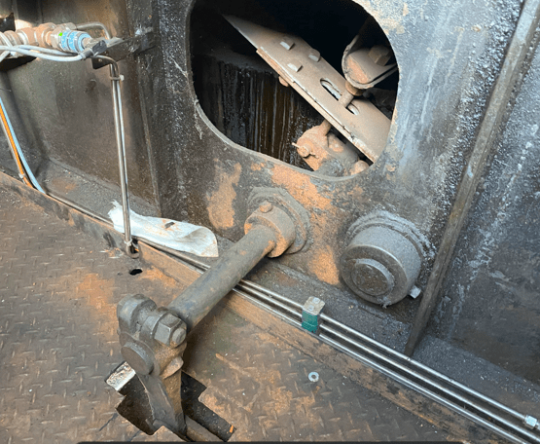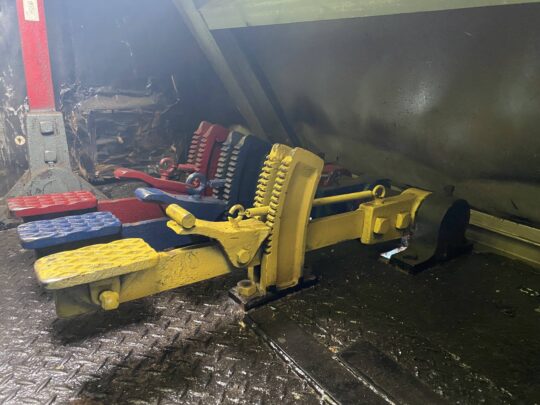Background:
Hindon’s customer is a leading provider of crane services, including crane repairs, for the maritime industry and also commonly supports its customers with various crane retrofit and upgrade projects, as ship operators look to increase the productivity, reliability, and safety of their aging fleet.
One such project involved the customer supporting an end user with the automation of their old winch braking system. The existing winch design involved a pedal-operated system that required an operator to use a series of foot pedals to release and engage a band brake on the winch. The upgrade project involved removing these foot pedal controls and replacing them with a system that could be controlled remotely and automated.
The ideal retrofit solution required the replacement brake controls to fit in the place of the old foot pedals such that other modifications to the band brake configuration would not be required. Additionally, the system could not use pneumatics, due to reliability concerns when the ship was operating in cold climates. Lastly, the project timeline was a top concern, as the ability to complete the upgrade project while the customer’s ship was at the dock was critically important to the overall success of the project.
The customer brought in Hindon to provide the ideal replacement braking system. Hindon’s vast experience with retrofit applications across a variety of industries made Hindon ideally positioned to support the customer with this unique challenge.


The existing manually operated foot pedal system needed to be replaced with a system that could be controlled remotely and automated
Application Challenges:
- Requirement to mimic, while also automating, operation of manual foot-pedal system
- Dimensional challenges related to matching foot-pedal design to avoid need for further system modifications
- Technical requirements (including force and stroke) not immediately defined
- Compressed project schedule and delivery requirement (during the pandemic and winter holidays)
Solution:
After assessing the existing brake arrangement, understanding the critical dimensions and operation of the manual foot-pedal system, and reviewing the technical specifications of the winch braking system, Hindon recommended a solution involving electrohydraulic thrusters for the purpose of actuating and automating the old winch braking system.
The electrohydraulic thrusters Hindon specified for provided for use in the application were capable of the ideal stroke and force output required for the application. Also critical, the thrusters’ electric actuation was ideal for the customer’s operating environment as they would provide for uninterrupted operation in colder weather. The thrusters were equipped with lifting and lowering valves, which provide for adjustable time delays between when power is removed from the thruster and the brake engages and between when the thruster is powered on and the brake releases. These adjustable time delays allow for a smooth braking and brake release processes, which was ideal for use on this old winch, as it helps avoid jarring the crane every time the brakes cycle.
In addition to its strong technical understanding of the products potentially suitable for this job (including ELDRO thrusters), Hindon’s relationship with EMG Automation played a major role in allowing for this project completion and timely delivery. Hindon and EMG’s established relationship allowed all parties to move quickly and confidently knowing that this was not only the correct technical solution, but also one that could be delivered by the required date and would be properly supported domestically, if necessary.
From the initial RFQ to technical review and determination of system requirements, to shipment, and ultimate product delivery, the entire process was completed in just six weeks. By meeting this timeline and delivering while the ship was still at dock, the customer successfully upgraded the end user’s winch brake with a solution that was simple, cost effective, and suitable for use by the time the ship was ready to set sail.